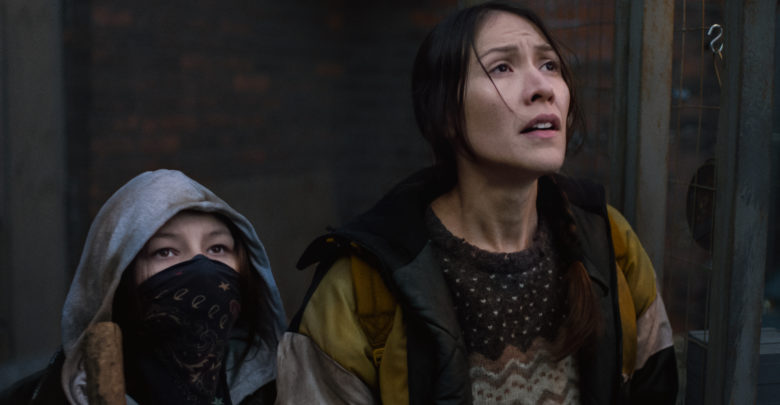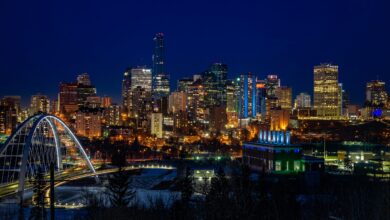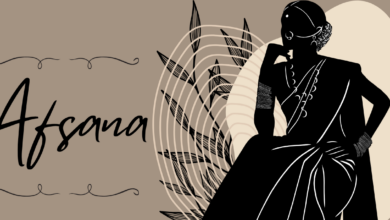‘Night Raiders’ presents valuable social commentary on colonialism
Night Raiders is a metaphor for Indigenous children who were forced into residential schools.
 Samuel Goldwyn Films
Samuel Goldwyn FilmsNight Raiders is the debut feature film of Cree-Métis director Danis Goulet. It is an exciting and thought-provoking film set in a post-war dystopian North America. In this grim and dreary imagining of North America, all children are property of the state and are forced to attend boarding schools called “academies.”
The story revolves around a single Cree mother Niska and her 11-year-old daughter Waseese. When the film begins, the two of them are living in complete isolation in the woods, surviving off the land. But, circumstances force the two of them to venture into the nearby city. This is a risky venture, because if Waseese is caught by the government police or the sinister drones that patrol the city she will be forcibly taken to the academy. When children are taken to the academy, they are raised there until they graduate and then taken to “Emerson” where they become citizens. Emerson could be considered this film’s version of “The Capitol” from The Hunger Games. Emerson is the society that won the war, while the society Niska lives in lost the war. Once children are taken to the academy, it is incredibly unlikely that they will ever see their parents again.
Shockingly, it is Niska that turns her daughter over to the academy. In a bleak world of poverty and despair, Niska is convinced by her friend that Waseese will be better off in the academy. There, Waseese will never have to worry about basic necessities and she can receive much needed medical care. When she graduates, she will have a more hopeful future as a citizen of Emerson than if she stays in the desolate city with her mother. It is a heartbreaking decision that haunts Niska. Ten months later, we see that Niska still regularly visits the outskirts of the academy where Waseese is staying and cries in complete misery and loneliness.
Later on in the movie, Niska comes across a group of Cree vigilantes who inform her that the academy is not all that it seems. The children are brainwashed to become soulless soldiers that will fight on the frontlines of Emerson’s wars. The vigilantes tell Niska that they must break Waseese out before she is completely indoctrinated to the point that Niska can no longer recognize her as her daughter. Faced with this knowledge, Niska bands up with the vigilantes to break Waseese out of the academy.
I thought this was an interesting parallel to residential schools in Canada. Indigenous people were kept in conditions of poverty and despair by the Canadian government. They were forced to rely on the government for food and supplies, much like how residents of the city in Night Raiders are forced to rely on Emerson. The Canadian government initially tried to convince Indigenous parents that their children would be well-cared-for in residential schools where they would be taught how to read, write, and adapt to the new settler society.
Of course, as people who are aware of Canada’s colonial history know, the majority of Indigenous children suffered terribly in residential schools and the assimilation tactics they were forced to endure has led to the destruction of Indigenous cultures and languages. Children in residential schools were basically being groomed to be good servants — boys were taught farmhand work and girls domestic skills — for Canadian citizens, much like how the children at the Academy are being groomed to be soldiers for Emerson.
As an Indigenous person, I personally loved this movie. I loved seeing Indigenous representation and Indigenous voices being heard. I was delighted when actors and actresses were speaking Cree since I am part Cree myself and rarely ever hear it spoken in the media. Just the very opening and closing scenes make the film worth watching since both scenes were the most poetic and profound moments of the movie in my opinion.
However, I’m not going to lie: I felt the movie suffered in moments where it was blatant that this movie is a metaphor for colonialism and residential schools in Canada. When the colonialism themes were subtly implemented, I felt it was a stronger movie. An example of this was when Niska said she could only understand a little bit of Cree despite being a Cree person, showing how the colonialism of Indigenous people has led to some Indigenous people not even being able to fluently speak their own native languages.
And, as a science fiction fan who loves watching science fiction and dystopian films, I would also be lying if I said this movie as a sci-fi thriller alone was great. While I never felt bored watching the film, and there definitely were scenes where I was on the edge of my seat, I was left disappointed and confused a lot of times. I wish the world had been a little more fleshed out and explained, since it sometimes felt difficult to immerse myself into the movie.
I felt that the director had lots of amazing ideas for this film. It just felt that sometimes she didn’t know how to implement them into the movie. For example, when scenes of what should have been the most exciting and suspenseful parts of the movie happened — breaking out of the academy and the final confrontation with the swarm of drones — they were often anti-climatic and bewildering.
However, if ideas are awkwardly executed, it could be because this is the director’s first time directing a feature-length film. And after the film industry has been oversaturated with dystopian films, it would be difficult for any director to make a dystopian film that doesn’t seem slightly cliché and overdone. The director managed to make Night Raiders stand out by weaving Indigenous themes into it.
As a sci-fi thriller film alone Night Raiders falls short of being called incredible, but as a social commentary on colonialism and residential schools in Canada this film can be considered “a must see!” The film raises a lot of important questions that I think are incredibly important for people to be aware of.
Night Raiders is currently playing in these Edmonton theatres: the Landmark Cinemas Theatre at City Centre Mall, the Scotiabank Theatre, and the Cineplex Odeon Theatre in South Edmonton Common.
Update: The article was updated at 12:41 p.m. on March 15 to reflect that children in residential schools were being taught to do work considered “underclass,” and more accurately convey the writer’s interpretation of the movie.
Update: This article was updated at 2:37 p.m. February 13, 2023 to change the author’s wording back to its original form. Previously, the article had been changed and did not reflect the author’s intended meaning.




